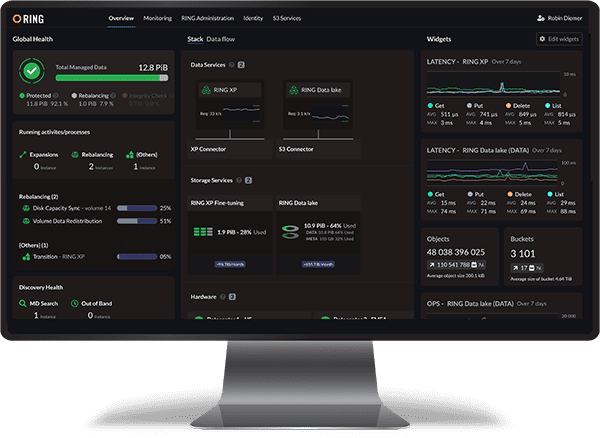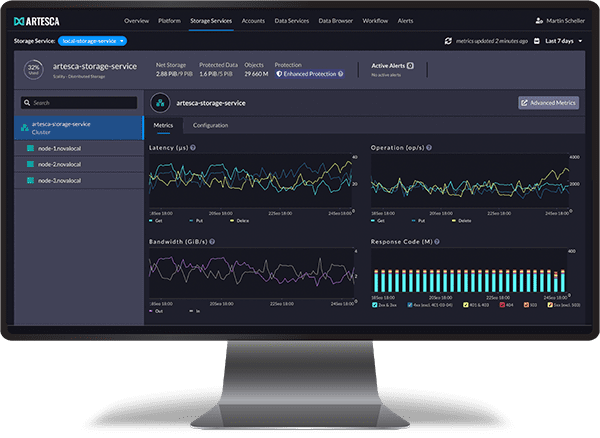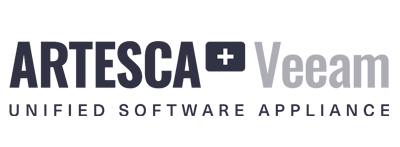Store and protect your data, your way.
Your apps. Your data center. Your edge. The clouds you choose. The performance you need.
One foundation. Two options.

Flexible scale-out file and object storage for unbreakable cloud data centers

Simple, secure S3 object storage for immutable backups

The world’s most flexible object store is now the fastest
20x faster than Amazon S3 Express One Zone
Massive, unpredictable workloads like AI? No problem. Scale limitlessly in multiple dimensions.

This Changes Backup
Veeam + Scality.
One unified software appliance.

5 levels of cyber resilience.
End-to-end cyber resilience with unbreakable data protection at every level of the system.
Get to know us.
Performance, not promises.
Partner with the best. We do.
Where to meet Scality
![]()
Find a reseller
See our channel partners by geolocation
![]()
Request a demo
Get a personalized presentation
![]()
Contact us
Reach out to our dedicated team

Scality builds infinitely scalable, cyber-resilient S3 object storage for the world’s most discerning and data-driven companies. Our patented MultiScale Architecture enables limitless, independent scalability in all critical dimensions to meet the unpredictable demands of modern workloads. CORE5 technology delivers end-to-end cyber resilience for unbreakable protection against the threats of today and tomorrow.
Locations
San Francisco, USA
Telephone: +1 (650) 356-8500
Paris, France
Telephone: +33 1 78 09 82 70
Washington D.C., USA
Toll Free: +1 (855) 722-5489
London, UK
Telephone: +44 20 3004 8181
Tokyo, Japan
Telephone: +81-3-4405-5400






